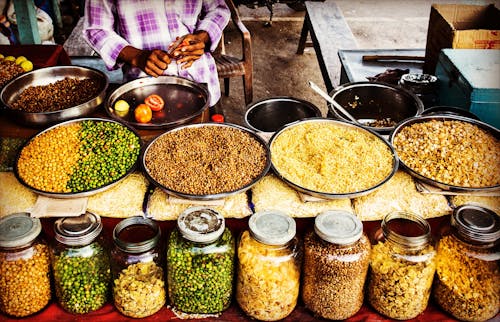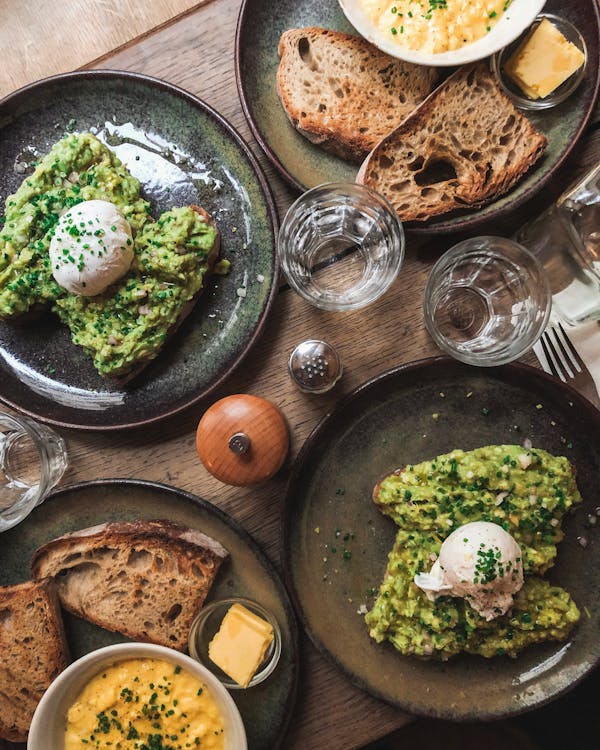
Different Healthy Foods From Village
Foods that are rich in tradition and high on health — that is
what you get in villages across India. Here's a glimpse into the wonderful
flavours and tastes that make up our culinary heritage.
Do you want your family to stay fit and healthy? Then go
back to your roots. Re-visit those traditional recipes and dishes that have
been handed down through generations. Trust us, these are your best bet for a well-balanced meal. Don't believe us,
think back to summer vacations long ago when you went to your native village.
You had nothing to do but play all day with friends and eat the delicious food
cooked at home. You ate healthy for everything was locally grown and sourced,
and garnished with homegrown spices and served with lots of love.
Now, cut back to the present. Nutritionists believe that
it is important to eat local and seasonal. In fact, today's healthy
living mantra is to 'eat what your grandparents ate'. The idea
here is to go back to a simpler lifestyle, to eat traditional foods and village
specialties as these are more beneficial for you and your family.
So, re-introduce your children to village foods —
produced from locally grown grains, fruits and vegetables. Doing so means they
will also learn what it is to embrace fewer processed foods and more of what is
homegrown or homemade. What's more, your children will learn to differentiate
between foods that are full of flavour and fast food. The switch will benefit
the entire family and lead to a healthier, holistic lifestyle.
Take a nostalgic trip down memory lane as we feature 10
healthy village foods that are rich in tradition and taste.

Clear Glass Jars With Assorted Foods
 |
| Clear Glass Jars With Assorted Foods |
Black urad dal laddu
Straight from the villages of India, this sweet dish is made with black urad dal, raw rice, jaggery and sesame oil. With just the right amount of proteins, fat, carbohydrates and essential nutrients, this simple dish is a local favourite. This sweet dish is known to be super-nutritious is considered a storehouse of calcium and hence, enhances general health. That is one reason why it is given to girls who have attained puberty and also, lactating mothers.Mixed rice
Rice,toor dal, spices and an array of
vegetables are cooked together to make this super-healthy recipe. In villages,
people make this dish to feed large gatherings during family functions and
temple festivals. Perfect for weekday dinner or lunch, you can't go wrong with
this one-pot recipe from Tamil Nadu.
Rice flatbread
This recipe from Karnataka is a firm favourite in
villages and homes across the state. Akki rotti or roti does
not require you to grind or ferment dosa batter. Rather, it is
made of rice flour that has been kneaded into a dough along with finely chopped
onions and vegetables (the last is optional). The dough is then divided into
smaller portions and moulded into circular shapes by hand onto a griddle. Thiseasy-to-make dish is delicious accompanied by coconut chutney and
is the perfect way to kick-start your mornings.
Salty dal soup
Upsaaru is
a spicy dal soup from southern Karnataka. Toor dal,
green gram dal and some greens are cooked together to make
this nutritious, lip-smacking recipe. This is a perfect accompaniment for rice
or ragi mudde (ragi balls). This dish is the villagers' way of
keeping themselves healthy during the monsoon and winter seasons.
Goan mixed vegetable stew
This dish comes from the Goan Hindu Community. Thisvegetarian dish is a speciality which is served during weddings, pujas, festivals and other important occasions of the
community. As it comes from Konkani kitchens, it uses coconut generously. Khatkhate is a creamy coconut curry made with a mix of
vegetables and toor dal. The highlight of the dish is the addition of
locally grown berry known as tephal or triphala. The tanginess of the berries adds a nice
sharpness to the dish.
Pearl millet porridge
 |
| Top View Photo Of Foods |
Kambu Koozh is
a porridge made from pearl millet, which is one of the oldest cultivated grains
in India. Full of micronutrients and fibre, this cooling drink/porridge is made
with buttermilk. Traditionally, it is eaten with onions and green chillies. Once
considered a poor man's food, of late it has gained prominence due to its
health benefits. This gruel from Tamil Nadu is perfect for summer-time and is
gluten-free too.
Sorrel leaves pickle
This fiery hot recipe comes from the villages of AndhraPradesh. Tangy sorrel leaves are rich in vitamin C, iron and folic acid. These
immunity-boosting nutrients make it ideal to consume during the monsoons and
keep nasty infections at bay. The vivid green leaves are cooked with ground spices,
resulting in a mouth-watering accompaniment that compliments almost every main
dish.
Ankapur Chicken
You can get a peek into the Nizam's kitchens of
Telangana with this finger-licking curry. The secret to the divine taste of the
dish is the wild country chickens of Ankapur in Nizamabad district. The chicken
is first roasted over fire to give the meat a smoky flavour and juicy texture.
The subtle marinade of freshly ground spices enhances the taste
wonderfully.
Stuffed bitter gourd
Forget paneer tikka and tandoori chicken, keema
bharekarela is the new Punjabi dish to try. If your child (and spouse)
can't stand the sight or taste of bitter gourd, this is the recipe to win them
over. Spicy minced meat is stuffed into hollowed-out bitter gourd and fried
till nicely brown. Health and taste come together to create magic in this
perfect winter dish.
Roasted raw mango sherbet
 |
| Top View Photo Of Foods |
This cooling summer drink from Bengal is made from
selected raw mangoes that have golden yellow flesh. The twist in this
refreshing drink is that the mangoes are roasted, giving it a unique flavour.
With some mint leaves, cumin powder and a dash of rock salt, this delectable
drink will make summer days full-flavoured and breezy.
Going back to the roots has to be a conscious decision,
it is about mindful eating. It is about eating fresh, local and regional. It is
about appreciating the traditional but giving it a trendier and tastier, twist.
So, what are you waiting for? Nourish your family's body, mind and soul through
these healthy village foods from different states of India. Bon appetit!
Health Benefits Of Festival Food
Do you know that the special dishes traditionally prepared
during festivals have many health benefits? Reap all the goodness of bevu bella
and obbattu this Ugadi.
Come Ugadi, the family home of Rajeev Gangur wears a festive look.
There are frenzied activities everywhere as all join hands to spring-clean the
house before the festivities. On the day of the festival, children, Shreya and
Shyamanth wear new clothes and visit the temple to pray to Sun God along with
their parents, Rajeev and Jayashree. Afterwards, they are served the special
Ugadi dish Bevubella as their mother explains
the significance and meaning of all the six ingredients used in the dish. To
celebrate the onset of spring and a new year, Jaya also prepares special sweets
like obbattu for the festival.
Festivals in India are incomplete without food, Ugadi is no exception.
Ugadi is the New Year’s Day for the Kannada and Telegu communities. Being a
spring time festival, lavish spreads are prepared during the festival.
Traditional Ugadi sweets like obbattu or hollige is
prepared from toor daal, wheat flour, jaggery
Six ingredients and what it symbolises
and ghee. So, it has carbohydrates, proteins, fats and fibre, all of these you need for a balanced diet.
Bevu bella or pachadi as known
in Andhra and Telengana, is a symbolic dish to signify six different taste of
life. Six distinctly different ingredients are used in the dish shows six
different flavours of life. All the family members are encouraged to taste it.
The six ingredients used in the Bevu bella or pachadi are, neem
flowers; which symbolise bitterness of life, tamarind symbolises the challenges
we face, pepper powder is for anger or upsetting moments in life, raw mango
symbolises surprises in life, salt is for zest for life and jaggery symbolise
the sweet taste of life like happiness.
Through this dish different experiences of life are explained.
Health benefits of the six ingredients
Apart from its symbolic meanings, all the six ingredients used in the
dish Bevu bella has many health benefits.
Jaggery: Jaggery has good amount of iron and
is a less processed compared to sugar. It is also said to improve immunity,
cleanses the liver and good for preventing constipation.
Raw mango: Raw mango has vitamin C, vitamin A
and lots of magnesium. It also considered good for heatstroke. Consuming raw
mango helps in managing blood pressure, improves digestion and boosts immunity.
Tamarind: Tamarind has good amount of iron and
magnesium. Magnesium helps in protein synthesis, controlling sugar and blood
pressure levels
Neem flowers: Neem and it flowers possess many
antioxidants. It has antifungal and antibacterial properties. It is used to
treat intestinal worms in children. Also good for nausea and belching, neem
reduces wound healing time, helps control diabetes, aids in healthy hair and
skin.
Pepper/chilli powder: Whether you use black pepper powder
or red chilli powder to your Ugadi dish, both have their health benefits. Black
pepper powder is good for treating cough, anorexia and indigestion. Chilli
powder increases the metabolism and boosts immunity.
Salt: Salt in limited amount is needed to maintain the
hydration levels of the body.
Children and festival food
 |
| Photo Of Chocolate Cake |
Bangalore lays much emphasis on encouraging our kids and teens to eat
traditional food, specially food prepared during festival. With the craze for
fast food on the rise, it is important that we, parents introduce nutritious
traditional food to our kids. Proper nutrition during childhood helps them grow
into healthy adults. It will also help them cultivate lifelong healthy food
habits. Also, spices used in our traditional food are good for health.
Traditional festive foods use ingredients that are fresh and has little
or no processing and no additives. Foods prepared for festivals are seasonal
foods and we must encourage families, including children to consume those
foods.
How to make traditional food interesting for children
Traditional foods can be made more
interesting by involving children in the preparation, cooking or serving,
depending on their age. Traditional foods can be made more colourful by adding
natural colours like beetroot juice, carrot juice, etc. Using cookie cutters to
cut traditional savouries into different fun shapes also helps to increase the
wow factor. Forcing children to eat food, traditional or otherwise, makes them
more stubborn. Instead, ask them to taste different foods and allow them to
develop their own likes and dislikes.
Eating seasonal food:
Eat more seasonal food as urges all to eat local seasonal food. Taste and basic nutrients of fruits and
vegetables are lost in transportation. That can be avoided by choosing locally
available products.
Eating seasonal foods also impact our health positively. It also
ensures that nutrient deficiencies are reduced. Eating certain foods at certain
time of the year could boost immunity and overall well-being.
By - P. Sakthi Vel, The Choose Healthy Food
By - P. Sakthi Vel, The Choose Healthy Food

0 comments:
Post a Comment